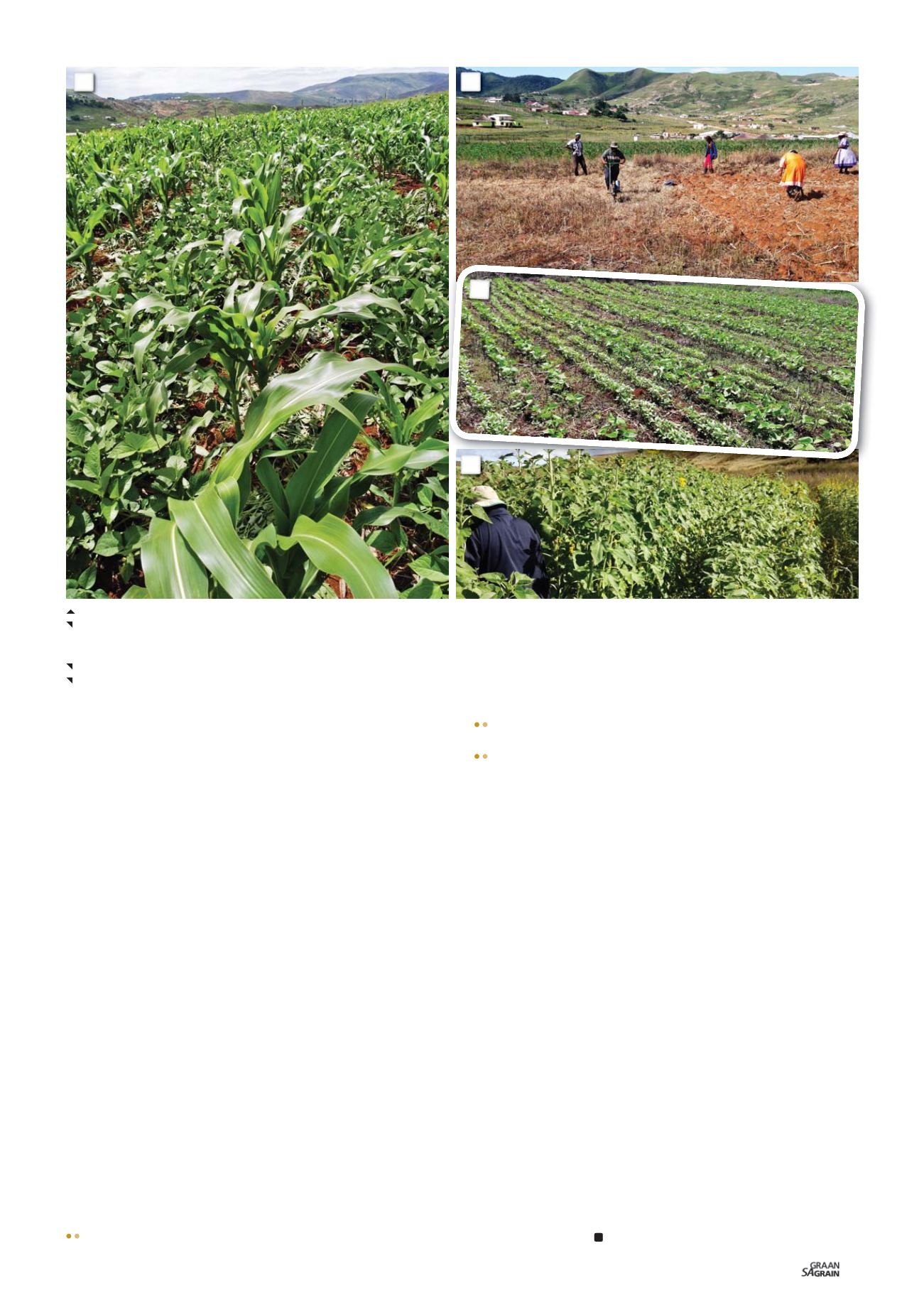

85
March 2018
gramme (FIP) for smallholder farmers, implemented in Madzikane in
collaboration with Kwanalu.
Xaba has been exposed to practices such as minimum tillage, im-
proved seeds and a range of agro-chemicals through collabora-
tive work with Pannar. He has tried minimum tillage for a couple of
years and has witnessed an increase in land production potential
and efficient use of inputs, saving both labour and money.
However, he was not familiar with the other conservation agricul-
tural (CA) principles and practices, such as increased diversity
(e.g. through intercropping) and permanent organic soil cover. He
was eager to try this out with various planting methods and imple-
ments, with a view of comparing it with his normal mono-cropping
practice.
His CA trial
Xaba’s 400 m² plot was planted on 22 November 2016 using Sahara
yellow maize seed, gadra beans and cowpea seed varieties, planted
as tramline intercrops – thus, two rows maize and two rows legumes.
The learning group members worked together to lay out the plot, add
lime and fertiliser and plant the basins and rows. This process was
then continued for the other members of the group when they plant-
ed their own trials. Crop germination was not great, due to crows
eating planted seeds. Subsequent growth, however, was good.
On 1 February last year, the learning group gathered again at Xaba’s
field for a second round of planting trials. They wanted to experi-
ment with late season planting of beans to compare that with early
season planting and with planting of cover crops. They planted the
following three trial plots:
Monocrop beans
Intercropping beans and a summer cover crop mix (sunflower,
sunn hemp and millet)
Summer cover crops
Crop yields
He realised a somewhat low maize yield of 1,3 t/ha in his first year’s
CA trial plot which has been planted with hand held planters. Dam-
age by crows after planting was substantial on this plot that also had
poor emergence of 53%. His maize CA plot planted with a tractor-
drawn two-row no-till planter had good germination and yielded
3,6 t/ha. He sold his surplus maize locally in the village and made
an income of around R2 400.
Conclusion
Agriculture has an important role to play in rural livelihoods to pro-
mote food security and income generation, but many challenges still
exist despite the presence of support organisations. Stakeholder
platforms for collaborative efforts and shared learning have a bet-
ter chance of strengthening the smallholder sector. Moreover, com-
munities should be at the centre of dialogue and decisions taken
as they continue to research new options to strengthen their rural
livelihoods.
The Grain SA FIP will continue to involve more smallholder farmers
in the area after having witnessed the positive outcomes of crops
grown under CA. Awareness events, such as farmers days, are a
great medium for sharing and informing people about CA and its
benefits.
Innovative farmers, such as Xaba, supported by learning groups
and concerted collaborative efforts from interested and caring
stakeholders in communities, have a big role to play in improving
smallholder farming.
4: His maize and bean intercrop system.
5: Late season bean planting. Cosmas is using a hand pushed Haraka planter for the summer cover crop seed (on the left) while the
ladies are planting beans using hand hoes (on the right of the picture). The maize in the background of the picture belongs to another
co-operative member.
6a: A view of the bean and summer cover crop intercrop plot around six weeks after planting.
6b: The summer cover crop plot maturing towards the end of the season.
4
5
6b
6a
















